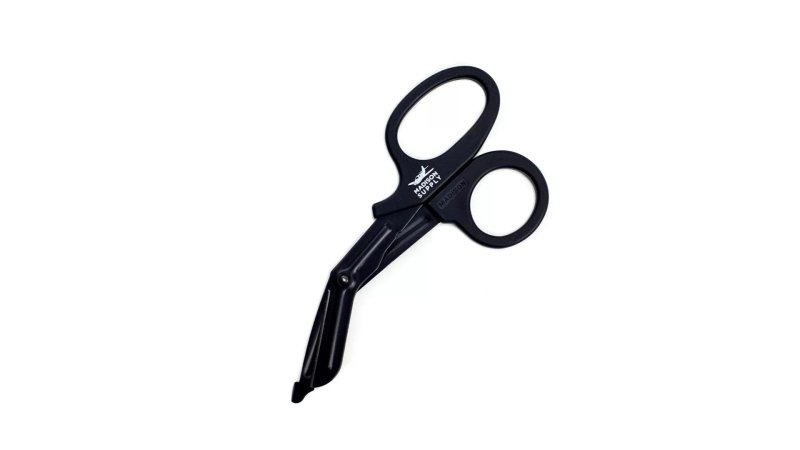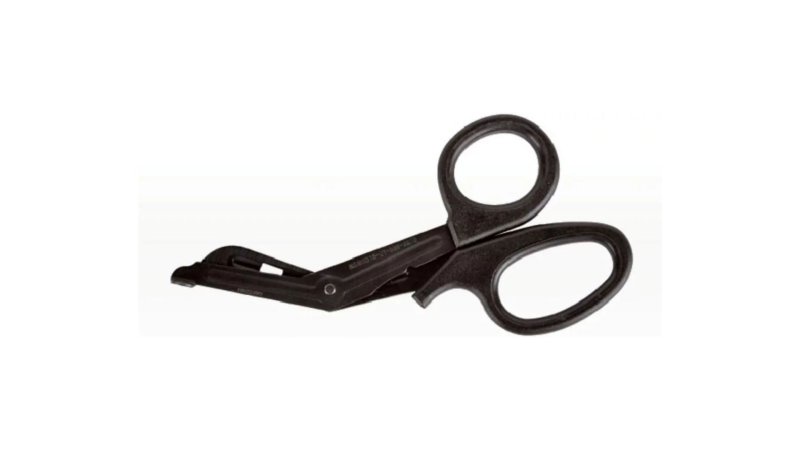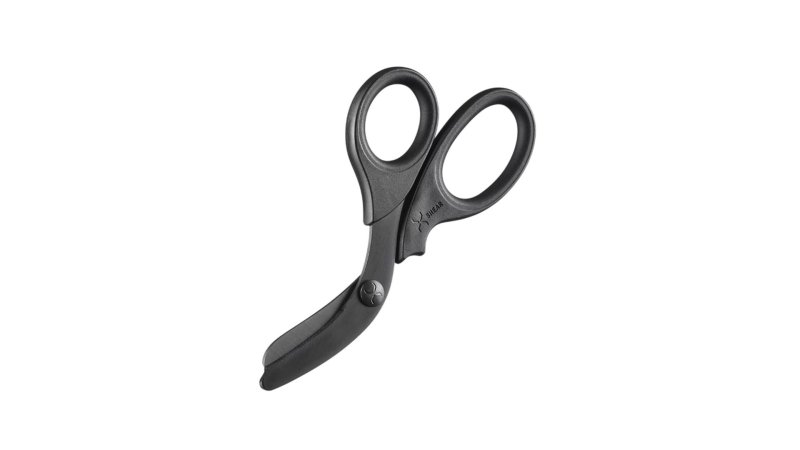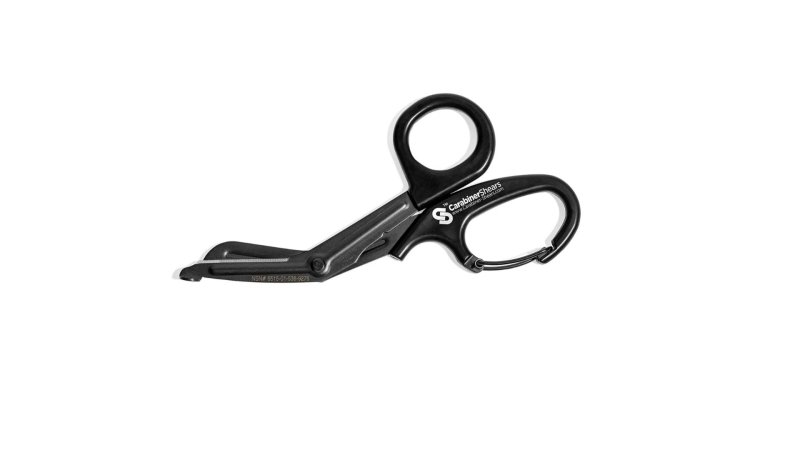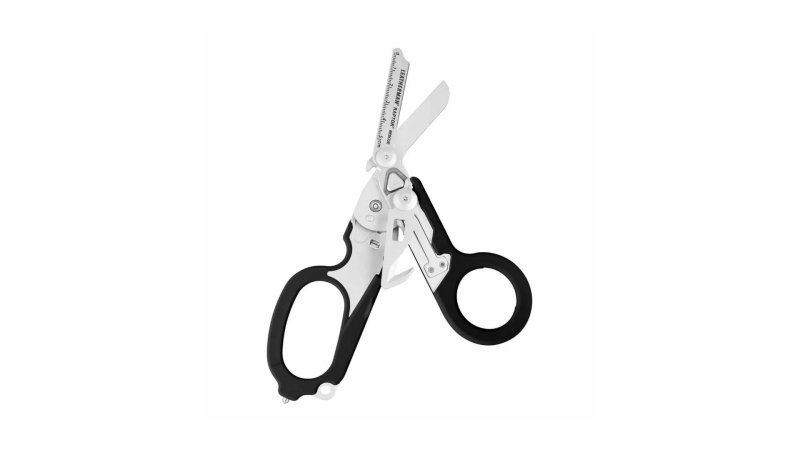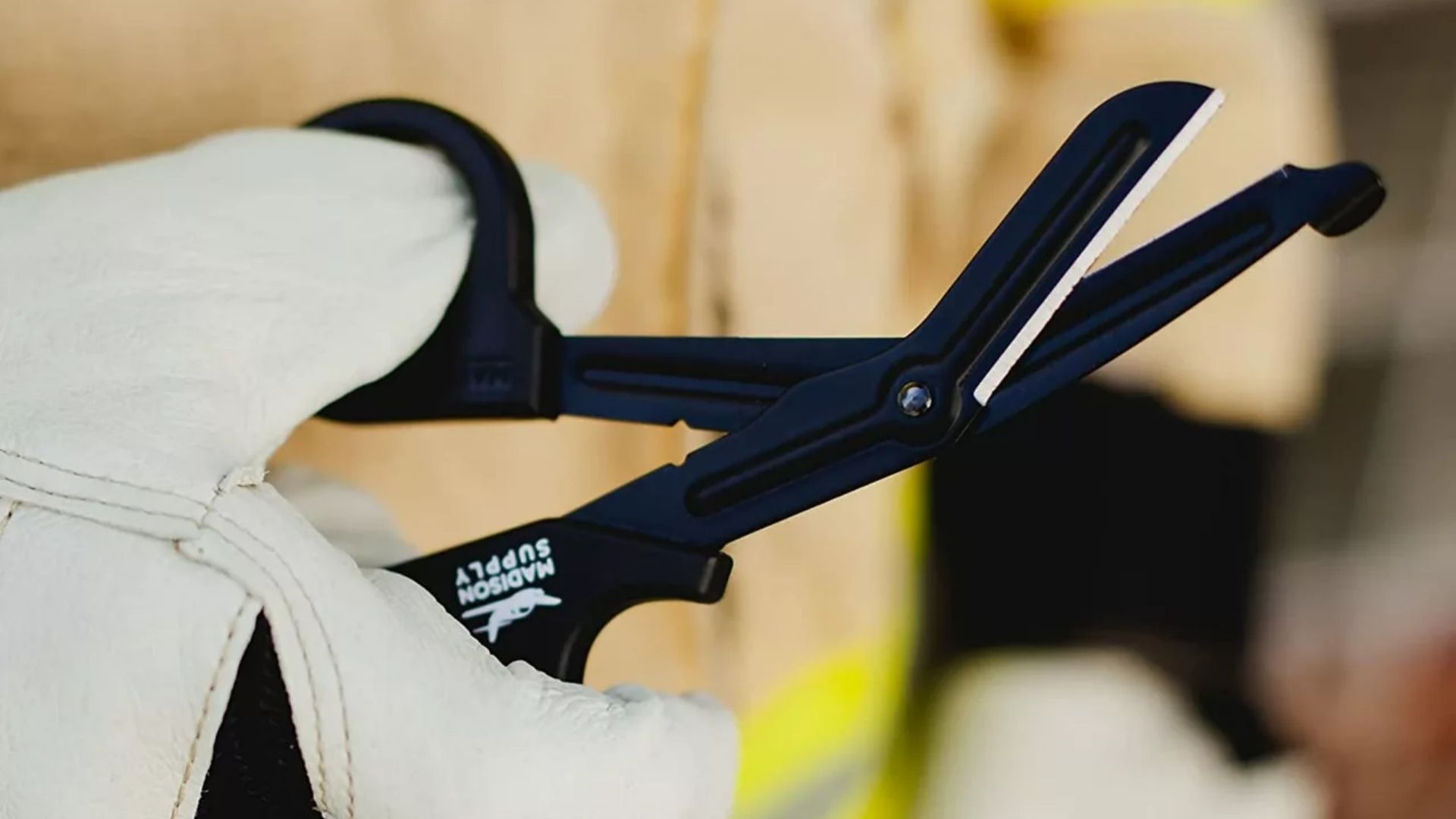

We may earn revenue from the products available on this page and participate in affiliate programs.
As soon as you arrive on the scene, you’re glad you remembered your trauma shears. It’s your first call, and you just hope you’re actually ready. Upon assessing the patient, you pull out your shears, and cut through the hem of his jeans. Within one or two cuts, you feel the blades begin to dull, and before you finish the job, you’re ready to chuck the things halfway to Baghdad. As your partner takes over with some shears that actually work, you ask yourself, “Who makes this kind of junk anyway?” Saving a few extra bucks certainly wasn’t worth it, and now you’re going to have to bum another pair of trauma shears from someone else until you can find a pair that actually works.
Thankfully, this doesn’t have to be you. With a little time, energy, and money, you can avoid massive frustration by acquiring a pair of the best trauma shears that won’t leave you, or your patient, high and dry.
Best Overall
Madison Supply Fluoride Coated Medical Scissors
Pros
- Affordable
- Durable
- Autoclavable to 290°F (143°C)
- Includes non-stick fluoride coating
Cons
- May be slightly large for some users
- May have stiff movement
- Fluoride coating isn’t the most durable
Product Specs
- Length: 7.5 inches
- Blade material: Stainless steel
- Blade finish: Fluoride coating
- Autoclavable: Yes
Best Value
NAR Trauma Shears
Pros
- Affordable
- Very durable
- Very good edge retention
- Includes rubberized grip and O2 wrench
Cons
- Lacks non-stick surface
- Not autoclavable
Product Specs
- Length: 7.25 inches
- Blade material: Stainless steel
- Blade finish: Black
- Autoclavable: No
Editor’s Choice
XShear Black Titanium
Pros
- Extremely durable
- Autoclavable
- Slim and lightweight
- Five-year warranty and 90-day money-back guarantee
Cons
- Expensive
- Heavy
- Sheath sold separately
Product Specs
- Length: 7.5 inches
- Blade material: 420J2 stainless steel
- Blade finish: Black titanium coating
- Autoclavable: Yes
Best Trauma Shears with Carabiner
Fluoride-Coated Carabiner Shears
Pros
- Affordable
- Can be stored virtually anywhere
- Autoclavable to 290°F (143°C)
- Includes non-stick fluoride coating and lifetime warranty
Cons
- Occasional reports of shears falling open while on belts
- Occasional reports of pivot pin rust
Product Specs
- Length: 7.5 inches
- Blade material: 420J2 stainless steel
- Blade finish: Fluoride coating
- Autoclavable: Yes
Best Trauma Shears Multi-Tool
Leatherman Raptor Rescue
Pros
- Versatile
- Very durable
- Very good edge retention
- Includes lanyard loop, pocket clip, and angle-adjustable belt holster
Cons
- Very expensive
- Heavy
- Not autoclavable
Product Specs
- Length: 8 inches (open)
- Blade material: 420HC stainless steel
- Blade finish: Bare steel
- Autoclavable: No
Why you should trust us
Before becoming a professional gear nerd, I spent a number of years as both a lifeguard and a lifeguard instructor. My hands-on experience with various types of first aid and medical care equipment taught me the value of quality equipment and instilled in me a need to select only the best. As such, I’ve developed a particular interest in emergency gear and have covered everything from tourniquets and rescue knives to flashlights and pre-made first aid kits. I’ve even written an article all about how to build your own first aid kit.
All this said, I recognize that I am not an EMT, trauma surgeon, ER nurse, or combat medic. I know the limits of my training, and my conscience demands that when I run into those limits, I must defer to the knowledge of those with greater training and experience than my own. Your safety and success are paramount.
Types of trauma shears
While trauma shears are themselves a specialized type of scissors, these emergency medical tools have their own unique categories worth noting. The indispensable trauma shear can appear in one of two formats: traditional or multi-tool. Each has its strengths and weaknesses, but your tool of choice will depend most heavily on your own specific needs. Either way, though, you can rely on angled blades, guarded tips, and finely-serrated edges to maximize your trauma shear’s capabilities.
Traditional
Despite what the naysayers would have you believe, tradition isn’t always a bad thing, and this is especially true with trauma shears. While a non-traditional shear, such as a multi-tool trauma shear, certainly can earn its place in your tool kit, most professional rescuers rely on traditional trauma shears due to their predictability, ease of use, minimal weight, and low cost. For the majority of emergency medical providers, traditional trauma shears are the only way to go.
For those not already in the know, traditional trauma shears look like funky yet beefy scissors, and the eyes don’t lie. Traditional trauma shears break the mold of the traditional scissors form factor, but their odd angles and added girth make safe and speedy emergency care a reality.
Multi-tool
As you might expect, these trauma shear multi-tools do more than snip through safety belts or slice through denim at the drop of a hat. These multi-tools often pack in features like strap cutters, glass breakers, O2 wrenches, and measurement markings. Best of all, they fold away like a typical knife-oriented multi-tool.
If space efficiency is your best friend, then a multi-tool trauma shear may be worth your hard-earned cash. Thanks to their increased versatility, they can be an excellent choice for go bags, minimalist emergency kits, or similar uses. Also, compared to most traditional trauma shears, these tools hold an edge MUCH longer, making them a true investment. Of course, the added weight is a tradeoff that may or may not be worth it to you.
Key features of trauma shears
Despite boasting a fairly simple and straightforward design, trauma shears do come with their own list of noteworthy features. Factors such as overall length, blade materials, and sterilization options stand out the most, but before making your purchase, always make sure you’re looking at a genuine pair of trauma shears with the proper build quality, angled blades, flanged lower blade tips, and single finely-serrated edge. If the product before you lacks any of these essentials, don’t waste anymore of your time.
Length
With standard paper scissors, overall length doesn’t really matter too much, but with trauma shears, nothing could be further from the truth. The straight edges on regular scissors allow a user to cut through paper and similar materials with a smooth sliding motion without actually moving their hand. Unfortunately, trauma shears feature finely serrated blades which require first responders to actively work the scissors as they slice through uneven or thick materials.
Most traditional trauma shears feature an overall length of 7.5 inches, and most multi-tool offerings are comparable. That said, small and miniature shears do exist with an overall length of five inches or less, designed for more niche applications than the standard size trauma shears.
Blade materials
Trauma shears can endure a good bit of abuse, especially in professional EMS and similar lines of work. As such, it’s not uncommon to go through shears like candy, but if you do your research, you can downgrade that financial root canal into a minor monetary filling by investing in longer-lasting blade materials.
Most trauma shear blades are made from cheap, relatively thin steel which dulls relatively quickly, especially when it comes to traditional shears. That said, some products and most multi-tool shears utilize somewhat higher grade stainless steels which can handle more abuse, such as 3Cr13, 420J2, 420HC, or 440A. While nowhere near the quality of even mid-grade pocket knives, these steels can last quite a bit longer than cheaper materials. In the end, the old adage “you get what you pay for” rings true.
Blade finish
While blade steel makes a difference in the durability department, a quality blade coating can increase your shear blades’ durability and ease of use. Most commonly, trauma shear blades will employ a fluoride coating, while others may go with a titanium bonded or diamond-like coating (DLC) finish instead.
Fluoride coatings are the most common shear blade finish and do an excellent job of defeating sticky substances, such as bandage adhesives. As such, fluoride coatings are particularly valuable in hospital and clinical settings.
Finishes like titanium-bonded and DLC (extremely rare on trauma shears) increase blade durability. Since most trauma shears use low-cost stainless steels for their blades, these finishes provide an extremely thin yet resilient layer of protection against both wear and rust.
Autoclave-safe
Anyone with even basic medical training understands the potential dangers of bloodborne pathogens. Using only sterile equipment is a bare minimum standard, but after you’ve used your non-disposable equipment to treat a patient, what do you do next? Depending on where you work, you may have access to an autoclave. If so, you’re in luck — maybe.
After their initial cleaning, a quality pair of trauma shears can be thrown into an autoclave for easy sterilization and peace of mind. As such, look for such a pair. In many cases, shears will have a marking molded into the handles indicating that they are autoclave-safe. If not, you could be out of luck (and another five to 10 bucks). Contact your shear’s seller or manufacturer to check your shear’s rating, but without any markings, don’t get your hopes too high.
Benefits of trauma shears
Upgrade your capabilities
Tracking down a pre-made first aid kit that doesn’t require supplementation is similar to tracking down seven unicorns that split the pot of gold at the end of the rainbow before setting off in seven different directions. Whether you want a simple home first aid kit, need to upgrade your mini trauma kit, or wish to supplement the kit in your car, selecting a pair of trauma shears may be your next best step.
Adding trauma shears to your equipment improves your ability to respond to life-threatening emergencies with greater speed, improving your patient’s chance of survival. Whether you need to better access a gunshot wound to prevent your patient from bleeding out or your need to administer CPR, adding a quality pair of trauma shears could literally save a life.
Patient safety
With a show of hands, how many of you have ever stabbed yourself with a pair of scissors? That’s what I thought. When I was a kid, I hated round-tip scissors, because “adult” scissors were so much cooler, darn it! Still, I have to admit (very begrudgingly) that those kid-friendly scissors might be a little less dangerous. When it comes to trauma shears, however, I’m a huge fan of blunted blade tips.
Imagine trying to cut through the hem of your jeans in record time with your average pair of Fiskers. Sure, you could pull it off, but how many times will you end up stabbing yourself without adrenaline coursing through your veins? Yeah, that’s what I thought. Now, those blunt-tipped trauma shears don’t sound so bad in a world fraught with frivolous lawsuits, do they?
Fast treatment times
When treating a life-threatening injury, time is of the essence. Tools that slow or impede your ability to treat a patient have no place in emergency medical care. A quality pair of trauma shears are just the opposite, providing you with the ability to quickly and safely access the treatment site.
Thanks to the angled blade design, serrated edges, and blunted blade tip, quick access to injuries is about as easy as slicing with a hot knife through butter. By eliminating the need to exercise the cautions scissor-like shears would entail, trauma shears decrease the time necessary to access and increase your patient speed and/or likelihood of recovery.
Trauma shears pricing
Budget
Trauma shears with a price tag below the $7 mark tend to fall into the disposable/short-term use category. These shears are simple, straightforward affairs and often consist of low-cost materials with the manufacturing quality to match. Most often, these shears feature bare stainless steel blades, although a few (mostly Chinese) offerings on Amazon advertise fluoride coatings or titanium-bonded finishes.
While these trauma shears (usually) include all the essential features that make them true trauma shears, they usually lack in the area of performance. Due to high-bulk manufacturing methods, pivot points may get weak quickly, leading to premature wear. Throw some thin blades into the mix, and there’s a chance your new shears could flex around a belt or webbing rather than slice through it.
Low-end steels can dull very quickly, and cheaply-applied finishes may chip rather easily. In most cases, putting these shears through an autoclave would result in a melty plastic mess. So, if you plan to save some cash, be prepared to spring for some new trauma shears within a few months.
Mid-range
Generally speaking, the $7 to $15 price bracket is the sweet spot when it comes to trauma shear value. While exceptions may exist, most shears in this range should endure a minimum of six months worth of heavy use before they need to be replaced due to their higher quality of construction, materials, and fit and finish.
Mid-tier trauma shears often use slightly less expensive steels, such as 420J2, although most manufacturers don’t publish their steel of choice. Hands-down, fluoride coatings are the most common finish for these scissor blades, and sometimes, you will encounter rubberized grips as well. Best of all, chances are high that any pair of shears you find in this bracket are autoclave-safe. That said, check your local listings.
Premium
Honestly, finding a $15 or $20 set of trauma shears is like finding a rainbow-colored unicorn in a west Texas rainstorm. Most trauma shears in this price range tend to be quite a bit more expensive than $15. These shears are built to last for years, and their price tags reflect that goal. This is also the price bracket in which you find trauma shear multi-tools. Trauma shear multi-tools also make an appearance in this price bracket, but they tend to be very expensive.
Shears costing more than $15 usually employ high-end blade steels compared to their cheaper competitors, and fancy finishes, such as DLC and bonded titanium, make occasional appearances. Common blade steel choices include 3Cr13, 420J2, and 420 HC, and blade thicknesses can be quite impressive.
How we chose our top picks
Picking a pair of trauma shears isn’t something to take lightly, so in compiling this list, I made sure to scrutinize every possible pick before it made it onto this list. To start, I evaluated every product’s list of features — size, blade steel, blade finish, and autoclave compatibility — to determine its long-term advantages and drawbacks. I noted price tags, researched steel finishes, and scoured the interwebs for reviews by healthcare professionals and other real-world users. (Shout outs to Acme United Corporation, IBC Coatings Technologies, Inside First Aid, PrepMedic (times two), and SkinnyMedic!) Finally, I tallied the scores and found the winners. Cheap, weak, and flaky shears fell by the wayside, but those who survived the gauntlet truly earned their spot on this list.
FAQs on trauma shears
You’ve got questions, Task & Purpose has answers.
Q: Are bandage scissors and trauma shears the same?
A: No. Trauma shears are designed to remove clothing and other barriers to emergency medical treatment. Bandage scissors are multi-purpose scissors primarily found in hospitals and medical clinics and are designed to cut through gauze and bandages only.
Q: Are trauma shears sharp?
A: Yes, although not in the most traditional sense. The blades on trauma shears feature fine serrations to make cutting through denim, nylon webbing, rope, and other tough materials easier and faster.
Q: How do you know if a pair of trauma shears can be heat-sterilized in an autoclave?
A: Start by checking for an autoclave marking on the handle. If no such marking exists, contact the manufacturer.
Q: What scissors do paramedics use?
A: Most paramedics usually carry a pair of trauma shears.
Q: Are trauma shears TSA-approved?
A: Yes, the TSA has approved trauma shears for air travel in both carry-on and checked luggage. The only possible exceptions to this rule are the Leatherman Raptor and SOG ParaShears. It appears these shears cannot be stored in a carry-on (probably due to their seatbelt cutters), but placing them in checked baggage won’t be an issue.
Our gear section
For over 25 years, Brian Smyth has been neighbors with the Air Force Academy and the U.S. Army’s Ivy Division. He loves the challenge of crafting words and has written for The Drive, Car Bibles, and other publications. Nothing gets him going quite like the roar of dual Pratt & Whitneys overhead, the smell of cordite, and the stories of the Greatest Generation.
